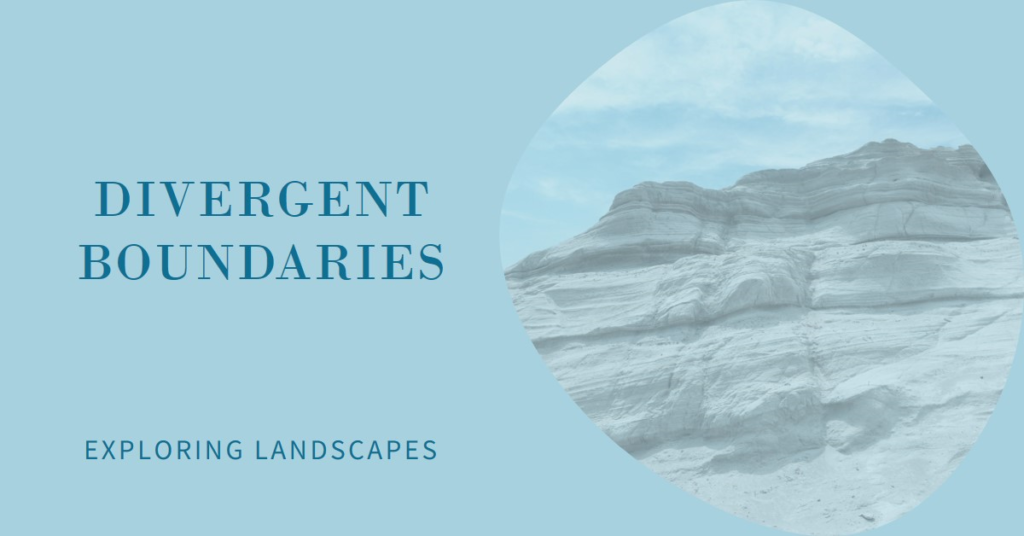
Table of Contents
- Introduction to Plate Tectonics and Divergent Boundaries
- The Great Rift Valley: A Geological Marvel (Landscape)
- The East African Rift: A Closer Look
- Volcanic Activity in the Great Rift Valley
- Rift Lakes: Natural Wonders of the Great Rift Valley
- Human History and the Great Rift Valley
- Ecological Significance of the Great Rift Valley
- Future of the Great Rift Valley
- Conclusion: The Great Rift Valley as a Divergent Boundary
Introduction to Plate Tectonics and Divergent Boundaries
Landscape – Plate tectonics is a fundamental concept in geology, explaining the dynamic nature of Earth’s lithosphere. The lithosphere, Earth’s rigid outer shell, is divided into several plates that float on the semi-fluid asthenosphere beneath. These plates are constantly moving, interacting at their boundaries in various ways. Among these interactions, divergent boundaries play a crucial role in shaping our planet’s surface.
At divergent boundaries, tectonic plates move away from each other. This movement leads to the formation of new crust as magma rises from beneath the Earth’s surface, solidifying to create new landforms. One of the most striking examples of a landscape formed by a divergent boundary is the Great Rift Valley. This geological marvel provides a fascinating insight into the processes that drive plate tectonics and shape our world.
The Great Rift Valley: A Geological Marvel (Landscape)
Stretching over 6,000 kilometers from Lebanon in the Middle East to Mozambique in Southeast Africa, the Great Rift Valley is one of the most prominent examples of a divergent boundary. This extensive trench system is a testament to the immense forces at work beneath the Earth’s surface. It is a place where the African Plate is being pulled apart, leading to the creation of a landscape marked by deep valleys, towering escarpments, and volcanic activity.
The Great Rift Valley is not a single continuous valley but a series of rift valleys that are interconnected. This complex system includes some of the world’s most famous features, such as the Red Sea, the Gulf of Aden, and the East African Rift. Each of these components contributes to the overall significance of the Great Rift Valley in understanding divergent boundaries.
The East African Rift: A Closer Look
The East African Rift, a prominent segment of the Great Rift Valley, is perhaps the most well-known and studied part of this geological feature. It extends from the Afar Triple Junction in Ethiopia down to Mozambique. This rift is characterized by a series of grabens—elongated, depressed blocks of the Earth’s crust bordered by parallel faults.
In the East African Rift, the African Plate is splitting into two smaller plates: the Somali Plate and the Nubian Plate. As these plates continue to move apart, the rift is widening, leading to significant geological changes. This process is not rapid but occurs over millions of years, gradually reshaping the landscape.
Volcanic Activity in the Great Rift Valley
One of the most striking features of the Great Rift Valley is its volcanic activity. The movement of tectonic plates at divergent boundaries allows magma to rise to the surface, creating volcanoes. In the Great Rift Valley, several active and dormant volcanoes dot the landscape, providing evidence of the ongoing geological processes.
Mount Kilimanjaro and Mount Kenya, two of Africa’s highest peaks, are located within the Great Rift Valley region. These towering mountains were formed by volcanic activity associated with the rifting process. Additionally, the region is home to numerous smaller volcanoes and volcanic craters, each contributing to the rich geological diversity of the area.


Rift Lakes: Natural Wonders of the Great Rift Valley
The Great Rift Valley is also renowned for its spectacular rift lakes. These lakes are formed in the depressions created by the rifting process, filling with water from various sources. Some of the most famous rift lakes include Lake Tanganyika, Lake Malawi, and Lake Turkana.
Lake Tanganyika, the second deepest lake in the world, lies within the Western Rift Valley. Its unique ecosystem supports a diverse array of aquatic life, including many species found nowhere else on Earth. Similarly, Lake Malawi is renowned for its incredible biodiversity, particularly its cichlid fish species. These rift lakes are not only geological wonders but also vital ecological habitats.
Human History and the Great Rift Valley
The Great Rift Valley has played a significant role in human history. It is often referred to as the “Cradle of Humankind” due to the numerous fossil discoveries that have been made in the region. The rifting process has exposed ancient rock layers, providing archaeologists with a unique opportunity to study early human ancestors.
Some of the most famous fossil finds in the Great Rift Valley include the remains of Australopithecus afarensis, such as the famous “Lucy” skeleton discovered in Ethiopia. These discoveries have provided invaluable insights into human evolution, making the Great Rift Valley a focal point for paleoanthropological research.
Ecological Significance of the Great Rift Valley
Beyond its geological and historical importance, the Great Rift Valley is also an ecological treasure. The diverse habitats created by the rifting process support a wide range of flora and fauna. From the lush forests and savannas to the arid deserts, the Great Rift Valley encompasses a variety of ecosystems.
This ecological diversity is crucial for biodiversity conservation. Many national parks and wildlife reserves have been established within the Great Rift Valley to protect its unique species and habitats. These protected areas are not only important for conservation efforts but also for tourism, providing opportunities for people to experience the natural beauty and wildlife of the region.
Future of the Great Rift Valley
The geological processes that created the Great Rift Valley are still ongoing. As the African Plate continues to split, the rift is expected to widen further. This could eventually lead to the formation of a new ocean basin, separating parts of eastern Africa from the rest of the continent. While this transformation will occur over millions of years, it highlights the dynamic nature of our planet.
The future of the Great Rift Valley also depends on how we manage and protect this unique landscape. As human activities and climate change impact the region, it is essential to balance development with conservation efforts. Sustainable practices will be crucial in ensuring that the Great Rift Valley remains a vibrant and ecologically diverse region for future generations.
Conclusion: The Great Rift Valley as a Divergent Boundary
In conclusion, the Great Rift Valley is a prime example of a divergent boundary, showcasing the incredible power of plate tectonics in shaping our planet. From its dramatic landscapes and volcanic activity to its rich biodiversity and historical significance, the Great Rift Valley offers a comprehensive view of the processes at work at divergent boundaries.
Understanding and appreciating the Great Rift Valley’s unique geological features not only enhances our knowledge of Earth’s dynamic systems but also underscores the importance of preserving such natural wonders. As we continue to study and explore this remarkable region, the Great Rift Valley remains a testament to the ever-changing nature of our planet, reminding us of the profound forces that drive geological and ecological evolution.


